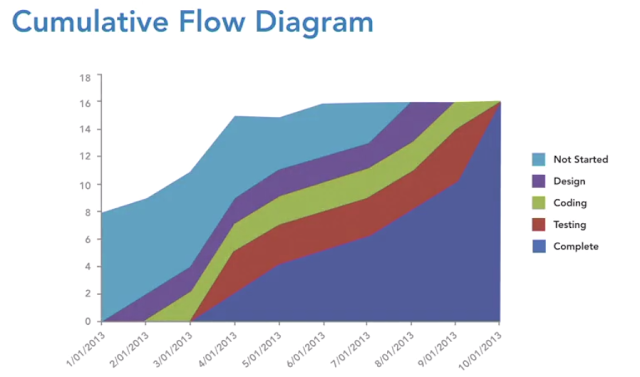AGILE
Agile software development refers to a group of software development methodologies based on iterative development, where requirements and solutions evolve through collaboration between self-organizing cross-functional teams. Agile methods or Agile processes generally promote a disciplined project management process that encourages frequent inspection and adaptation, a leadership philosophy that encourages teamwork, self-organization and accountability, a set of engineering best practices intended to allow for rapid delivery of high-quality software, and a business approach that aligns development with customer needs and company goals. Agile development refers to any development process that is aligned with the concepts of the Agile Manifesto. The Manifesto was developed by a group fourteen leading figures in the software industry, and reflects their experience of what approaches do and do not work for software development. Read more about the Agile Manifesto.SCRUM
Scrum is a subset of Agile. It is a lightweight process framework for agile development, and the most widely-used one.- A “process framework” is a particular set of practices that must be followed in order for a process to be consistent with the framework. (For example, the Scrum process framework requires the use of development cycles called Sprints, the XP framework requires pair programming, and so forth.)
- “Lightweight” means that the overhead of the process is kept as small as possible, to maximize the amount of productive time available for getting useful work done.
- Increase the quality of the deliverables
- Cope better with change (and expect the changes)
- Provide better estimates while spending less time creating them
- Be more in control of the project schedule and state
1. What is the duration of a scrum sprint?
Answer: Generally, the duration of a scrum sprint (scrum cycle) depends upon the size of project and team working on it. The team size may vary from 3-9 members. In general, a scrum script complete in 3-4 weeks. Thus, on an average, the duration of a scrum sprint (scrum cycle) is 4 weeks. This type of sprint-based Agile scrum interview questions is very common in an agile or scrum master interview.
2. What is Velocity?
Answer: Velocity question is generally posed to understand if you have done some real work and familiar with the term. Its definition “Velocity is the rate at which team progresses print by sprint” should be enough. You can also add saying the important feature of velocity that it can’t be compared to two different scrum teams.
3. What do you know about impediments in Scrum? Give some examples of impediments.
Answer: Impediments are the obstacles or issues faced by scrum team which slow down their speed of work. If something is trying to block the scrum team from their getting work “Done” then it is an impediment. Impediments can come in any form. Some of the impediments are given as –
- Resource missing or sick team member
- Technical, operational, organizational problems
- Lack of management supportive system
- Business problems
- External issues such as weather, war etc
- Lack of skill or knowledge
While answering impediments related agile scrum interview questions remember that you may be asked the way to remove any of the mentioned impediment.
4. What is the difference and similarity between Agile and Scrum?
Answer: Difference between Agile and Scrum – Agile is a broad spectrum, it is a methodology used for project management while Scrum is just a form of the Agile that describes the process and its steps more concisely. Agile is a practice whereas scrum is a procedure to pursue this practice.
The similarity between Agile and Scrum – The Agile involves completing projects in steps or incrementally. The Agile methodology is considered to be iterative in nature. Being a form of Agile, Scrum is same as that of the Agile. It is also incremental and iterative.
5. What is increment? Explain.
Answer: This is one of the commonly asked agile scrum interview questions and a quick answer can be given this way. An increment is the total of all the product backlogs items completed during a sprint. Each increment includes all the previous sprint increment values as it is cumulative. It must be in the available mode in the subsequent release as it is a step to reach your goal.
6. What is the “build-breaker”?
Answer: The build-breaker is a situation that arises when there is a bug in the software. Due to this sudden unexpected bug, compilation process stops or execution fails or a warning is generated. The responsibility of the tester is then to get the software back to the normal working stage removing the bug.
7. What do you understand by Daily Stand-Up?
Answer: You may surely get an interview question about daily stand-up. So, what should be the answer to this question? The daily stand-up is an everyday meeting (most preferably held in the morning) in which the whole team meets for almost 15 minutes to find answer to the following three questions –
- What was done yesterday?
- What is your plan for today?
- Is there any impediment or block that restricts you from completing your task?
The daily stand-up is an effective way to motivate the team and make them set a goal for the day.
8. What do you know about Scrum ban?
Answer: Scrum-ban is a Scrum and Kanban-based model for the software development. This model is specifically used for the projects that need continuous maintenance, have various programming errors or have some sudden changes. This model promotes the completion of a project in minimum time for a programming error or user story.











































